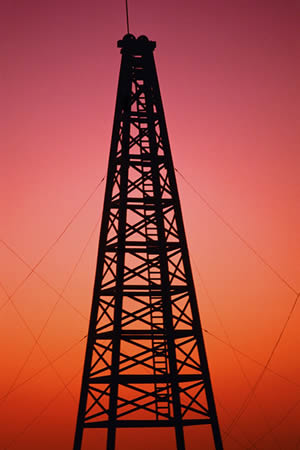Tuesday, June 16th, 2015 and is filed under Oil and Gas Current Events, Permian Basin Oil News, Texas Oil and Gas Investing
America’s shale boom isn’t a bust. Heck, it isn’t even slowing. It’s relentlessly transforming.
Welcome to Shale 2.0.
 Manhattan Institute and Northwestern McCormick School of Engineering and Applied Sciences fellow Mark Miller suggests that technological advancements have the industry poised for another, more significance Shale boom, let’s call it Shale 2.0.
Manhattan Institute and Northwestern McCormick School of Engineering and Applied Sciences fellow Mark Miller suggests that technological advancements have the industry poised for another, more significance Shale boom, let’s call it Shale 2.0.
Evidence abounds. The price of oil has cratered from north of $100 a barrel to roughly $59 today. Yet the Wall Street Journal notes the flow of capital to the U.S. oil producers hasn’t abated. Sure, cheap money ensures there are significant cash stockpiles in search of solid investments. But while the industry has slashed billions from their budgets and tens of thousands from their payrolls, private equity firms are poised to invest $20.6 billion in oil and gas startups in 2015.
Case in point: oil man Lance Langford, of Statoil’s North Dakota unit, just launched Luxe Energy LLC in Austin, Texas. Langford plans to scoop up oil and gas leases in West Texas with $500 million in financing from Dallas-based Natural Gas Partners. Luxe will apply technologies such as long reach horizontal drilling and multi stage fracking in its West Texas plays.
OPEC Implosion?
Though initially evasive about its strategy to maintain output amidst an excess in global crude supplies, OPEC now admits its aim was to kill the U.S. shale boom. At first the Cartel appeared well on its way toward achieving those ends. U.S. shale producers began idling rigs, plunging rig counts by 59 percent from last October’s peak.
Yet production has been on the rise as producers focus their resources on the sweetest shale fields. The U.S. Energy Information Service projects U.S. crude oil production will stabilize at an average of 9.4 billion barrels per day through 2015. That’s up from 8.7 million barrels per day in 2014. That 2015 figure is expected to dip slightly to 9.3 million barrels per day in 2016.
Rather than kill it, OPEC’s moves have made U.S. shale producers more resilient. They’ve tightened operations and embraced cutting-edge technologies. With over 2 billion well feet drilled, the industry has generated hundreds of petabytes of data over the past several years. They’re leveraging Big Data analytics to zero in on the most productive techniques and geology.
OPEC and the rest of the world assumed an $80 per barrel break-even point for U.S. shale operations. That might have been true when producers were running full throttle, drilling as many wells as fast as possible. But plunging prices forced producers to ease back and regroup. Oil service company contracts were renegotiated. Rigs were pulled. Drilling times were trimmed. Crews were culled with only the top performers retained. Producers began experimenting with new fluids and sands to achieve better results.
Upshot: That break-even point now hovers around $60 and may soon hit $50. Miller suggests Shale 2.0 may yield break-even costs on par with Saudi Arabia’s oil fields.
In short: OPEC’s strategy is failing. The more the Cartel attempts to knock shale producers out of the game, the stronger and more agile it becomes. It seems that U.S. shale ingenuity is here to stay.
RELATED >> Fracking Boom Driving Massive Industrialization in Louisiana
RELATED >> Eagle Ford Shale Boom May Soon Cross Mexican Border
RELATED >> Oil boom means big money, big needs in south Texas
RELATED >> Permian Rising ~ Booming Energy Production Driving TX & NM Economies
© Copyright 2024 Aresco, LP. All rights reserved. | Privacy Policy | Site by A3K Marketing. Admin Log in